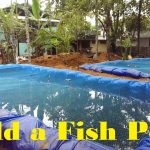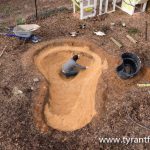How to Build a Pond for Duck Hunting
Are you an avid duck hunter looking to enhance your hunting experience? Building a pond specifically designed for duck hunting can significantly elevate your hunting success and overall enjoyment. In this comprehensive guide, we will explore the step-by-step process of building a duck hunting pond, including site selection, construction, and maintenance tips to ensure a thriving habitat for waterfowl.
Choosing the Right Location
The first crucial step in building a duck hunting pond is selecting the right location. Ideally, you should look for a site that offers a natural water source, such as a spring, stream, or wetland. This will help ensure a consistent water supply for your pond and attract a variety of waterfowl species. Additionally, consider the topography of the area to identify potential areas for pond construction. Look for low-lying areas with a gentle slope to facilitate water retention and natural drainage.
Obtaining Permits and Approvals
Before breaking ground on your duck hunting pond, it’s essential to obtain the necessary permits and approvals from local authorities. Depending on your location, you may need to secure permits related to water usage, wetland conservation, and land development. Consulting with environmental agencies and local conservation groups can provide valuable guidance on navigating the permitting process and ensuring compliance with relevant regulations.
Pond Design and Construction
Once you have identified a suitable location and obtained the required permits, it’s time to move on to the design and construction phase. Consider engaging the services of a professional pond builder or contractor with experience in constructing waterfowl habitats. They can assist with designing the pond layout, excavation, and installation of water control structures.
Key Considerations for Pond Design
When designing your duck hunting pond, there are several key considerations to keep in mind:
1. Size and Depth: The ideal size and depth of your pond will depend on the specific waterfowl species you intend to attract. Generally, a pond depth of 3 to 4 feet is suitable for dabbling ducks, while diving ducks may require deeper water.
2. Islands and Shallow Areas: Incorporating islands and shallow areas within the pond can provide nesting and resting sites for ducks, contributing to a more diverse and dynamic habitat.
3. Water Control Structures: Installing water control structures such as gates and pipes can help regulate water levels, creating seasonal variations that mimic natural wetland conditions.
4. Vegetation: Introducing native aquatic vegetation around the pond edges can offer cover, food, and nesting sites for ducks, enhancing the overall habitat quality.
Pond Construction Process
The construction process typically involves excavating the pond area, shaping the pond basin, and installing water control structures. It’s essential to use quality materials and construction techniques to ensure the pond’s long-term durability and functionality. Additionally, consider incorporating features such as shoreline shelves and inlets to promote a diverse habitat for waterfowl.
Establishing Vegetation and Habitat
Once the pond construction is complete, it’s crucial to focus on establishing suitable vegetation and habitat elements to attract and sustain waterfowl populations. Planting native aquatic vegetation such as smartweed, wild rice, and duckweed can provide essential food and cover for ducks. Additionally, creating shoreline habitat features such as brush piles and nesting structures can further enhance the pond’s appeal to waterfowl.
Water Management and Maintenance
Proper water management is essential for maintaining a healthy and productive duck hunting pond. Regular monitoring of water levels, vegetation growth, and overall pond conditions is necessary to ensure a thriving habitat for waterfowl. Implementing seasonal water level fluctuations and periodic habitat management practices can contribute to the long-term sustainability of the pond ecosystem.
Enhancing the Hunting Experience
Beyond providing a habitat for waterfowl, a well-designed duck hunting pond can significantly enhance the hunting experience. Installing strategically placed blinds, developing access points, and incorporating natural concealment features can create optimal hunting conditions. Additionally, implementing hunting regulations and ethical practices can help sustain healthy duck populations and ensure a sustainable hunting experience for future generations.
Conservation and Stewardship
As a steward of the land, it’s important to prioritize conservation efforts and responsible land management practices. By actively participating in wetland conservation programs, habitat restoration initiatives, and waterfowl research efforts, you can contribute to the preservation of duck populations and their natural habitats. Engaging with local conservation organizations and wildlife agencies can provide valuable opportunities to support waterfowl conservation and ecological sustainability.
Conclusion
Building a pond for duck hunting involves careful planning, design, and construction to create a thriving habitat for waterfowl. By selecting a suitable location, obtaining necessary permits, and following sound pond design principles, you can establish a sustainable ecosystem that attracts diverse duck species. Through proper water management, habitat enhancement, and ethical hunting practices, you can enjoy a rewarding and environmentally responsible duck hunting experience for years to come.
In summary, building a duck hunting pond is a multifaceted endeavor that requires a blend of environmental stewardship, engineering expertise, and a passion for waterfowl conservation. With the right approach and a commitment to sustainable habitat management, you can create a valuable sanctuary for ducks and a premier hunting destination for waterfowl enthusiasts.





